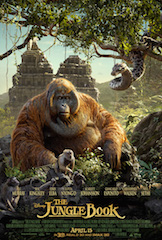 Director Jon Favreau’s The Jungle Book won this year’s Oscar for Best Visual Effects. A Walt Disney Picture, the movie is unique because the only live action character, the boy Mowgli, was shot on bluescreen while everything else was computer-generated. The visual effects team included key talent from Technicolor and its subsidiary, the Moving Picture Company. In part three of our five-part series, Rob Legato lead VFX supervisor, and second unit director on The Jungle Book explains how creating a movie that was totally dependent on VFX demanded a completely different approach to production, and opened the door to a greatly expanded role for VFX in real-world movie-making.
Director Jon Favreau’s The Jungle Book won this year’s Oscar for Best Visual Effects. A Walt Disney Picture, the movie is unique because the only live action character, the boy Mowgli, was shot on bluescreen while everything else was computer-generated. The visual effects team included key talent from Technicolor and its subsidiary, the Moving Picture Company. In part three of our five-part series, Rob Legato lead VFX supervisor, and second unit director on The Jungle Book explains how creating a movie that was totally dependent on VFX demanded a completely different approach to production, and opened the door to a greatly expanded role for VFX in real-world movie-making.
To support the development complex photo-realistic animal characters and rich jungle environments of The Jungle Book it was critical to develop user interfaces that masked the technical complexities of the collaboration and communications systems so artists could focus on their creative activities.
Creating The Jungle Book with one live actor and digitally created animals in a totally digital environment required a level of synchronization between greatly redefined and fully integrated processes that radically redefine the traditional notions of pre-production, production and post. To support the development complex photo-realistic animal characters and rich jungle environments of The Jungle Book it was critical to develop user interfaces that masked the technical complexities of the collaboration and communications systems so artists could focus on their creative activities.
Hundreds of artists and VFX specialists spread between London, Bangalore and Los Angeles generated many terabytes of data. The movie was color finished by Technicolor in both 2D, 3D and a multitude of high dynamic range deliverables and set the standard for global virtual productions and photorealism work. Fagnou supervised the technology infrastructure that underpinned the creation of The Jungle Book, a technologically and artistically complex project.
Legato, a multiple Academy Award-winner. has a long history of working with Technicolor teams on a myriad of projects, dating to first working with the company on director Martin Scorsese’s Oscar-winning films, The Aviator; The Departed; and Hugo, for which Legato received his 2nd VFX Oscar. His virtual production methodology, first developed for The Aviator, and expanded dramatically for director James Cameron’s Avatar, was the basis of production of The Jungle Book, a process that was fully integrated in Technicolor’s production and finishing pipeline.
Digital Cinema Report: The Jungle Book has been described as the most technologically advanced movie ever made, by more than one person. What did you learn about how to balance the technological sophistication this movie represents with the artistry that it clearly also demonstrates?
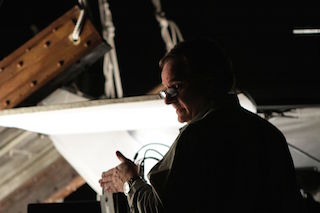 Rob Legato: It all starts with the artistry. We have been making movies for a long time and if you go back to the beginning, films were much more difficult to make [because of the absence of technology]. Yet there was tremendous artistry. So the artistry always overcomes the technology.
Rob Legato: It all starts with the artistry. We have been making movies for a long time and if you go back to the beginning, films were much more difficult to make [because of the absence of technology]. Yet there was tremendous artistry. So the artistry always overcomes the technology.
In the case of The Jungle Book, because things were done on a computer, we needed to employ the “analog way” we have made movies for over a century in order to make a film that flowed...that did not feel mechanical or computer-driven.
So we used analog techniques, which we did not pioneer but which we put to good use on The Jungle Book, to create something that felt like a regular movie and not like something that had been done with ones and zeroes.
DCR: What was the main challenge you saw at the outset in creating The Jungle Book, and why was it important to partner with companies like Technicolor to bring this particular vision to life?
RL: We wanted to partner with someone who was forward thinking, who did not rely on ‘this is the way we have always done it.’ This is because we were reinventing the vocabulary of how we make a movie in order to create one that would look and feel like it had been made in the way movies have been made for the last hundred years or so, but also a movie that is at the creative peak of the art form.
Technicolor embraced anything we wanted to do to make the movie look like it had been naturally photographed.
These projects are very complicated with all the various deliverables and different formats: 2D, 3D, UHD, etc. There were many different versions of the movie and they all had to be uniformly excellent because it will be judged based on the worst performing deliverable, not just the best performing deliverable.
Technicolor had [what it took] right off the bat as a company with a lot of depth. Technicolor has a history of seeking out and embracing new technology.
[Looking back] everybody was content with black and white films. Then somebody wanted to make them in color. Then they wanted to make them in the most natural color possible, to expand the palate and creativity of the artist so audiences would forget the technology and just embrace the artistry.
The end result was The Wizard of Oz, Gone With The Wind, Michael Powell’s movies with Emeric Pressburger, and all the other films done with Technicolor that have held up for the best part of a century.
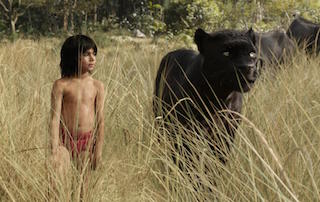 DCR: When we think of VFX we think of it as part of live action activity where you have some visual effects. The Jungle Book was the other way around. You had a lot of VFX and only one real character. How did you plan the VFX process with MPC and how did this fit in with other technical and artistic contributors that you had to manage for The Jungle Book?
DCR: When we think of VFX we think of it as part of live action activity where you have some visual effects. The Jungle Book was the other way around. You had a lot of VFX and only one real character. How did you plan the VFX process with MPC and how did this fit in with other technical and artistic contributors that you had to manage for The Jungle Book?
RL: Usually visual effects are brought into a live action world, but in the case of The Jungle Book, live action was brought into a visual effects world. The aim, of course, was to make it not look like a visual effects film.
Visual effects tend to get short shrift as an art form because -- if you do your job very well -- you encompass all the cinematic parts within the label of visual effects. It is photographed, there are sets, there are set dressings, there are costumes, there is hair, there is makeup.
In The Jungle Book, all the various things that go into making a movie are under the umbrella of visual effects. So you have to bring in the ability to create a visual effect that feels as if it uses all the cinematic arts.
The Academy Awards have categories for all those cinematic arts, but only one category for visual special effects. In the case of The Jungle Book all those other categories were encompassed in the one movie, a visual effects movie. We don’t separate those categories out and say ‘it’s the visual effects set dressing’, or whatever.
One day that may change, and we hope our contribution to the future of filmmaking is that we will forget visual effects are involved; visual effects will simply be in the vocabulary of making films in the future.
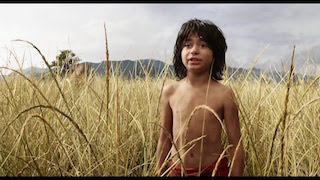 The way we set about making The Jungle Book was to use all the freedoms you have in the expensive process of making a movie: shooting a scene, shooting it from multiple angles, thinking how you will cut it all together. You have to bring all those to a visual effects film.
The way we set about making The Jungle Book was to use all the freedoms you have in the expensive process of making a movie: shooting a scene, shooting it from multiple angles, thinking how you will cut it all together. You have to bring all those to a visual effects film.
That is traditionally not done, because it is usually storyboarded and very carefully planned. You pre-decide ‘we are going to cut from this close-up to this wide shot’ and so on.
So we needed a partner like MPC that could say: ‘If you want to make a movie that feels like a live action movie we can change our working methodology to embrace that.’
To cut a long story short, we pre-visualized the movie in advance. Every shot, every angle, every choice was cut together by the editor and director Jon Favreau and influenced by myself, cinematographer Bill Pope and Chris Glass, the art director, and all the other people who were plussing-out the show.
Then we came up with a working template and we went on stage with this working template, shot for shot, angle for angle, that represented the best of the story and we acquired the material needed to put the shot together.
We did all our analog what-if scenario work in advance so that by the time we hit the stage we knew what the scene was going to be and then we plussed-out even that on the stage.
We had the boy on the stage who interacted with puppeteers who stood in for the animals and gave him feedback and who changed the lines on a take-by-take basis to make him feel like it was fresh again; not a studied overwrought piece of material, but one that had a bit of ad lib quality to make him feel like he was doing it for the first time.
All those things were done in advance and put together. It was a bit crude, and in years to come it will be less crude in terms of what the final product looks like. But it was enough to make all these decisions and all these creative contributions and when we went to MPC and Technicolor we were plussing-out every moment that we had plussed-out in an analog way.
The Jungle Book could only have been done with this technology, but it embraced other technologies: what you can do on stage with a camera where you work things out and shoot a few takes and then edit the material and extract the movie from all those various pieces.
So we had the material to play with and when we made our decisions they were well informed and we could start executing a very good-looking movie, a very good story, and a very good performance film. That ultimately is what The Jungle Book is.
DCR: You described a significantly different workflow, which suggests that the traditional sequence of preproduction, production, post-production is changing, perhaps even collapsing. So what is the role of the visual effects supervisor in a project like The Jungle Book? How do they ensure you tell the story you want to tell?
RL: That role is rather more fluid. In this case the phases of preproduction, production, post-production are all the same. As you are visualizing the film you are shooting it. Then you are editing it. You are in postproduction that day, literally on the stage. And you are pre-producing it because you are discovering how much of the set you need to build, and all those kinds of things.
We don't plan everything out in preproduction and then go and shoot it, even in a virtual way and then edit it and then turn it over to post-production.
With the schedules and the money and all the various things that happen on a visual effects-oriented film you have to start turning over the movie before you have actually made the movie, and that is very difficult. That is why things are not as live action looking as they could be, because you are not at that moment in time able to make that call.
We had to be pre-producing, producing, editing and post-producing all at the same time. And when we felt confident we had a theme that was worthy of being turned over, we could turn it over, because we were not going to be finished with the movie in the first couple of months of the turnover, but we had enough information to tell us that a scene was going to live for ever and that we liked it. And we also knew that if there was something we did not like we could go back out onto the virtual stage and re-imagine a new angle.
We were always improving the film. We could go right back to preproduction and production after we started cutting the movie. It never stopped. So the roll of the visual effects supervisor runs from the moment the filmmaking starts to the moment it ends.
I was on the film until the bitter end supervising all the deliverables, making sure that the quality was maintained. And that is probably the hardest thing on a movie like this; to maintain the high bar that you have set for yourself.
[From a VFX perspective] it’s easy to come up with something that looks quite good, that might be two minutes of a film, or three minutes of a film, but difficult do it for the whole film, to keep it consistent and not betray other moments of the film. You do not want it to look as if you have spent all your money and time on one great sequence, with all the others looking somewhat pedestrian.
[With The Jungle Book]...every shot has the same degree of difficulty, so keeping that high bar of quality and taste and artistry is the hardest thing to do on a film like this.
DCR: You have been working on advancing the role of VFX in this kind of storytelling for a long time. What did you learn from The Jungle Book to help you overcome the challenges you have just described?
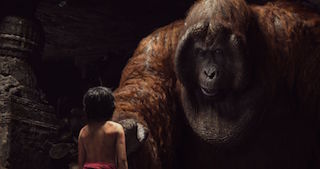 RL: The Jungle Book achieved some notoriety for showing that a VFX movie could work. Before Jungle Book people were very nervous about shooting almost an entire movie computer-generated on virtual sets, because no one had proved it could be done without it looking like a computer-generated movie.
RL: The Jungle Book achieved some notoriety for showing that a VFX movie could work. Before Jungle Book people were very nervous about shooting almost an entire movie computer-generated on virtual sets, because no one had proved it could be done without it looking like a computer-generated movie.
This means you can do a computer-generated sequence that will look exactly as if you went out on location and shot it. You can do it at any time with the comfort of not being in the elements.
I use the example of The Revenant. It’s a great movie but it was an arduous physical undertaking that most participants probably don’t want to repeat. It was very hard, very extreme work that yielded great realistic results but at a cost that makes such movies very few and far between.
Now we have proved we can produce something that fools the eye...[that means] we can make more of those very difficult movies; the ones that are vastly entertaining because they are different and raise the bar of how arduous the filming would have been. And yet the audience can’t tell the difference between something shot on location and something shot a stage or on a back lot, in a comfortable location where you can go back and shoot a scene again. You don’t want to go back into the snow, even if you could find it, so you tend to live with your results.
One thing The Jungle Book taught me -- and maybe the industry -- was yes, it can be done because it has been done.
I have been championing this way of making movies for a long time and every one of my visual effects sequences are created in this sort of organic way where I can pre-visualize it, edit it, change my mind a thousand times, feel secure about it, feel insecure about it and keep on striving to perfect it without being limited by the fact that all my storyboards need to be done by Thursday, then having to shoot whatever I have decided on, and that’s the end of it.
This way of working can be very, very fluid, and yield results. It sounds a little crazy if you are used to the tradition of visual effects; how buttoned up the budget for every shot is, and how buttoned up the delivery schedule of every shot is. That strictness imposed for economic reasons shows up on screen with the VFX not being as fluid or as dynamic as the artistry of making a movie.
I think this methodology will now be better accepted because we were able to achieve a great result. Once you know something can be done the impetus is there to do go one better, to explore another set of circumstances that can benefit from this methodology, and produce a result that belies how it was created.
It’s changing the way we do computer-generated special effects: from things that could not be done in the real world, to replicating the real world. The audience doesn’t buy the battle with two million soldiers; they know it’s faked, but if you shoot something in a way that looks exactly like it would look if it were real, that rubs off on the film in a good way and creates the suspension of belief that you get in a live action film.
In the Godfather, for example, you believe Marlon Brando is the Godfather: you forget he and his sons are actors being filmed with huge lights and cameras and you just enjoy the journey of the story.
That’s what we tried to do with The Jungle Book. It’s pretty preposterous: a little boy in a jungle with dangerous animals that he has befriended and that he speaks to. If the audience forgets all that artifice and enjoys the message behind the movie — which is why it has endured all these years — they forget that stuff because you convince them that it is real.
That is the main thrust of this kind of movie. You forget that it was done with ones and zeroes and literally hundreds of extremely talented artists from MPC and visual effects company Weta Digital who made it look as if they were not there in the first place.
That is what I got out of making The Jungle Book: our visual effects industry and our artists have grown up to the point where they are not just technical people who do wild visual effects scenes. They are filmmakers. They are artists. They are craftsmen of the first order and they are just getting better and better at telling stories on film, and that is to the benefit of everyone.
